Inside Overhead Projectors: How They Work & Exploring the Parts
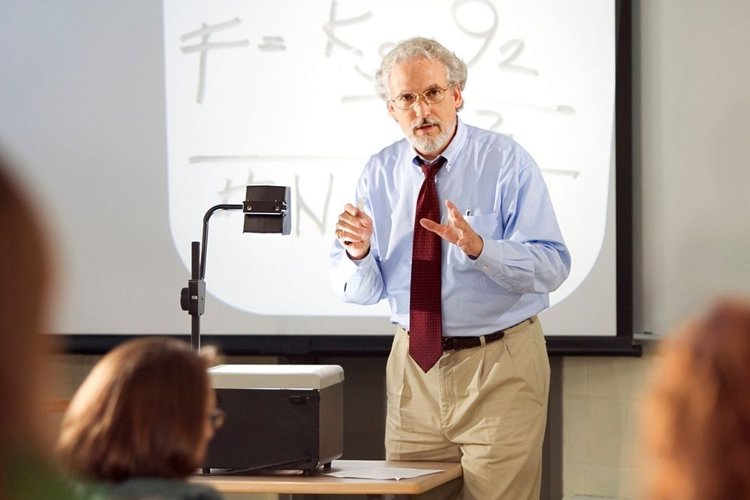
What To Know
- The overhead projector’s operation relies on several key parts: the base, a reflector and angled mirror to direct light, a cooling fan, a Fresnel lens , an adjustable arm, and the head containing another mirror and lens to project the image onto a screen.
- To function, overhead projectors require a continuous power supply, proper placement of transparencies on the glass cover, and may generate significant heat and noise from the cooling fan, which are notable disadvantages.
This guide breaks down how an overhead projector harnesses light and lenses to magnify images onto a screen, providing you with the knowledge to master your projections or satisfy your technical curiosity.
Ready to illuminate the subject? Let’s get started
Quick Navigation
How Does An Overhead Projector Work?
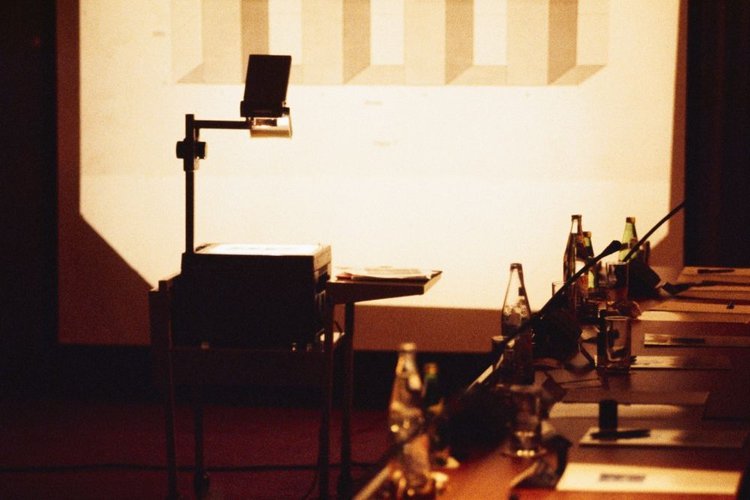
Overhead projectors make use of mirrors and converging lenses. They are used to project the image on a transparency onto your screen.
The image projected onto the screen is called a real image. This is because it is exactly like the original image on the transparency film.
If you think about it, the image projected onto the screen should appear backwards. This is why DIY overhead projectors need to have their transparencies facing inwards. That way, the image will be projected correctly on the screen.
Remember how your reflection in the mirror is facing you? The overhead projectors enable a mirror image projection instead of a direct one.
Overhead projectors flip the images of their transparencies. They do this with their mirror. The mirror does a vertical flip. This makes the left side of the transparency become the right side of the projection and vice versa.
Parts of an Overhead Projector and Their Functions
To understand how the overhead projector works, we must first know its major parts.
- The base
- The reflector and mirror
- The cooling fan
- The fresnel lens
- The arm
- The head
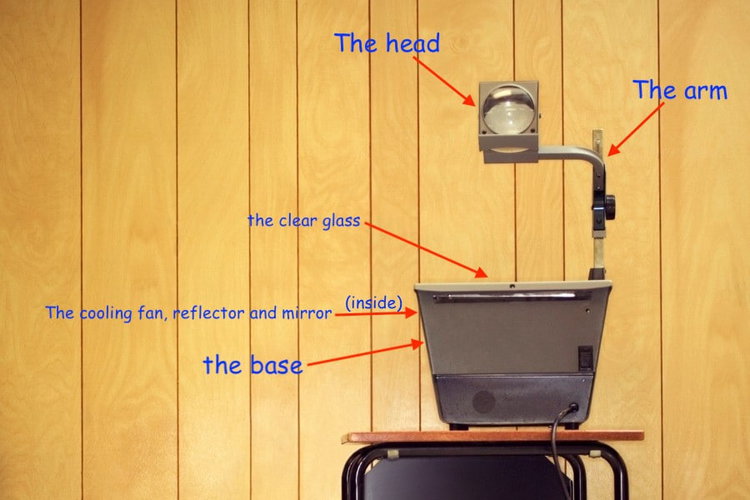
The base
The most important part of overhead projectors is called the base. This part contains a lamp. It also has a clear glass covering on top.
The glass covering is the surface on which the transparencies are placed. The lamplight escapes only through the glass cover. It lights up the glass cover and any transparencies on it.
The light will pass through the clear transparency sheet and project any image or text printed on it.
The reflector and mirror
A reflector in the base directs the lamplight towards a mirror. It prevents the light from scattering and producing a dim image.
The mirror in the base serves to reflect the light upwards and through the glass cover. It is angled at 45°. This enables it to capture light in its horizontal path and direct it upwards.
The cooling fan
The fan in the projector is also of great importance. The fan is located in the base. It removes the heat that lamplight produces.
If a projector overheats, it can cause damage to the system. Overheating can also make your projector shutdown while projecting.
The fresnel lens
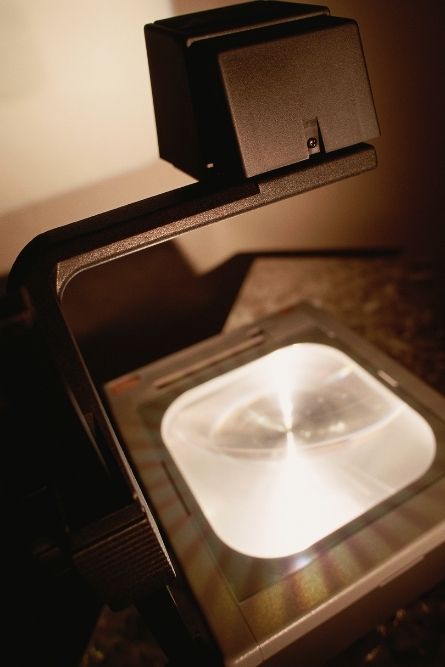
This is one of the two lenses used by an overhead projector. It is a circular lens located under the glass cover. The fresnel lens focuses light to one spot. In this case, it focuses the light in the direction of the head.
It bends the rays of light that spread outward from the glass cover. That way, all the rays from one spot on the transparency come back together onto one spot in the head.
For instance, if a transparency contains the single bold text ‘T,’ the fresnel lens makes sure that the projected image contains the same letter.
The arm
The projector has an arm which is connected to the base. The function of the arm is to hold up the head.
This arm can be adjusted to help focus the image on your projection screen. Moving the head unit up or down can improve focus.
The head
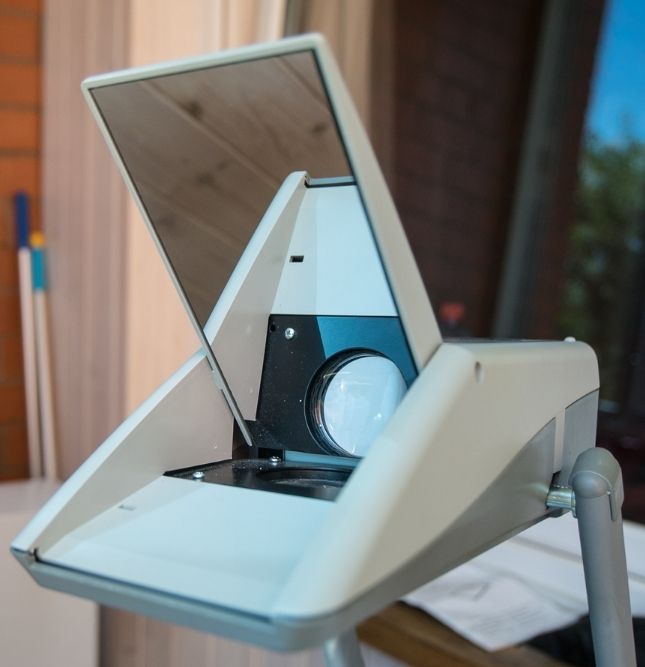
There is a mirror in the head of an overhead projector. The bottom of the head is open, allowing light to enter. On the inside of the head is an objective lens.
Light passes through the transparency and into the head. The image on the transparency is projected through the lens and onto the mirror.
The mirror then flips the image and directs it onto a projection screen. The image would be displayed on whatever the mirror is pointing towards.
The Image Projecting Process
Overhead projectors cannot work without transparencies. Anything to be projected has to be printed on the transparency.
This is because transparencies support the light mechanism of overhead projectors. Light can pass through them.
For your projector to work, it must first be connected to a power source. You can then turn it on and proceed to use it.
The lamp in the base comes on and illuminates the transparency placed on the glass cover. The fresnel lens directs the light. It directs the light from the transparency to the objective lens in the head.
Next, the image reaches the mirror in the head. The mirror flips the image and points the light in the direction of the screen.
Disadvantages of an overhead projector
- It can be quite demanding. It requires constant power supply and bulbs.
- An overhead projector generates quite a lot of heat. The cooling fan can be noisy and distracting.
- It can be hard to transport due to its size.
- It requires the use of print or written transparencies. This can be costly and inconvenient.
- The display options are limited. It only displays media you can represent on a transparency. You can’t project audio or motion pictures.
Conclusion
Overhead projectors come in very handy for a lot of reasons. They’re useful in offices, and as instructional materials in the classroom too.
Understanding how they work is important. It can arm you with knowledge to build one of your own.
Gabriella ‘Diogo is a technical writer with a vested interest in tech hardware and equipment. She shares her knowledge and processes in an easy-to-grasp, lighthearted style. When she’s not testing or researching device performance, you’ll find her writing short stories or rewatching episodes of her favorite sitcoms.

